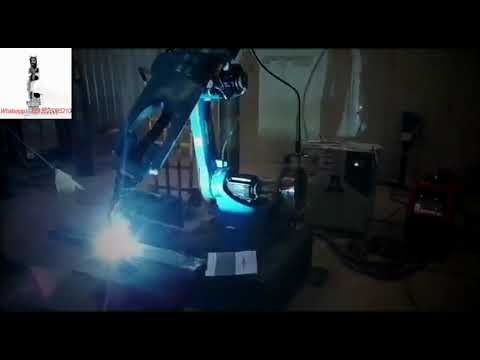Industrial Robot Price: A Comprehensive Guide
Industrial robots have revolutionized the manufacturing industry, bringing increased efficiency, precision, and productivity to various processes. As a leading supplier of positioners, welding robots, palletizing robots, stamping robots, painting robots, and loading and unloading robots, we understand the importance of these machines for businesses. In this article, we will delve into the world of industrial robots and explore the factors that influence their prices.
Industrial robots have come a long way since their inception. They were once bulky and expensive, limited to large-scale manufacturing operations. However, advancements in technology have led to the development of compact and more affordable robots that are accessible to small and medium-sized enterprises as well.
To understand the pricing dynamics of industrial robots, we need to consider several factors. The complexity and capabilities of the robot play a significant role in determining its price. For instance, a manipulator milling 6-axis welding robot arm with advanced control systems and high payload capacity will naturally be priced higher than a basic model with limited functionalities.
Another crucial factor that affects robot prices is the level of customization required. Some businesses may have unique requirements that necessitate custom-built robots. These robots may need to be designed specifically for a particular task, which adds to the overall cost.
Furthermore, the brand reputation and reliability of a robot manufacturer can influence the price. Established and renowned companies invest heavily in research and development to ensure the quality and performance of their products. Consequently, their robots tend to carry a higher price tag compared to lesser-known brands.
It is also essential to consider the overall cost of ownership when evaluating industrial robot prices. Operating and maintaining a robot involve additional expenses such as training, spare parts, and ongoing support. Manufacturers that offer comprehensive maintenance and support packages may have slightly higher upfront costs but can potentially save businesses money in the long run.
Now, let's discuss some common types of industrial robots and their respective price ranges. Please note that these prices are approximate and may vary depending on specific requirements and market conditions.
Positioners: Industrial positioners are crucial for ensuring precise and accurate movements during manufacturing processes. The price range for positioners can start from $5,000 for basic models and go up to $50,000 for more sophisticated and high-capacity variants.
Welding Robots: These robots are widely used in the automotive, aerospace, and construction industries. Entry-level welding robots may cost around $20,000, while more advanced models with enhanced capabilities can range from $40,000 to $100,000.
Palletizing Robots: Palletizing robots automate the process of stacking and arranging products on pallets. The prices for these robots can vary significantly depending on factors such as payload capacity and speed. Generally, prices can range from $30,000 for basic models to $150,000 for heavy-duty and high-speed palletizing robots.
Stamping Robots: Stamping robots are commonly used in the metalworking industry for tasks such as punching, forming, and embossing. The price range for stamping robots can start from $50,000 and go up to $200,000, depending on the complexity of the operations and the level of customization required.
Painting Robots: Industrial painting robots have revolutionized the painting process, ensuring consistency and precision. Basic painting robots can be priced around $50,000, while more advanced models for complex painting applications can range from $100,000 to $300,000.
Loading and Unloading Robots: These robots automate the loading and unloading of materials and products, improving efficiency and reducing manual labor. Prices for loading and unloading robots typically start from $30,000 and can go up to $100,000, depending on the payload capacity and customization requirements.
In conclusion, industrial robots have become indispensable assets in modern manufacturing facilities. The price of an industrial robot is influenced by factors such as complexity, customization, brand reputation, and overall cost of ownership. By understanding these dynamics, businesses can make informed decisions and choose the right robot that aligns with their needs and budget. Industrial Robot Price is an essential consideration, but it should always be evaluated in conjunction with the robot's capabilities and long-term benefits.
Industrial Robot
"The Affordability and Efficiency of an Advanced 6-Axis Welding Robot Arm for Industrial Applications"


